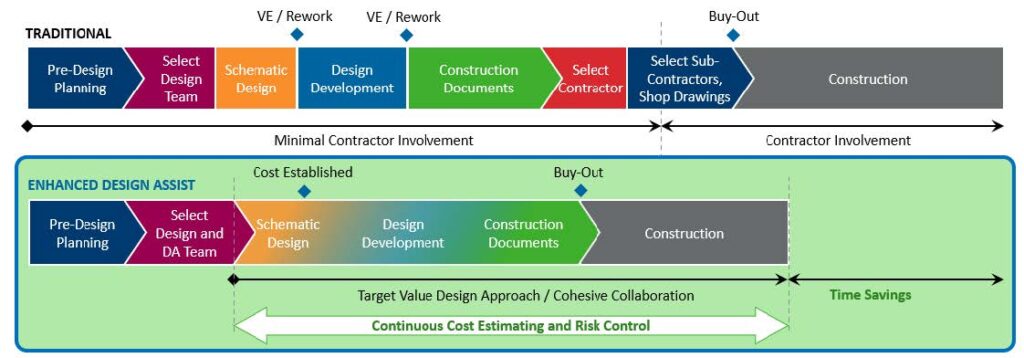
Written by Vincent Poon, VDC Manager, Structure Tone
In today’s fast-paced construction landscape, persistent challenges haunt project schedules and budgets. Delays and cost overruns often arise due to fragmented communication among stakeholders, design discrepancies discovered during the construction phase, and the need for latestage change orders.
Imagine a world where technology, construction, and design converge seamlessly to mitigate these issues. It’s possible! Through collaborative efforts using virtual design and construction (VDC) tools, our New York team offers what we call “enhanced design assist,” which aims to eradicate traditional construction challenges while improving efficiency and cost-effectiveness. In an industry where precision and collaboration reign supreme, this enhanced design assist process represents a conceptual shift that harnesses the synergy between technology, construction, and design to streamline the project delivery lifecycle.

A TEAM EFFORT
In this approach, the owner, architect, and contractor form a cohesive team from the project’s initial design phase. The team operates on Lean principles, like target value design, aiming to eliminate the need for late-stage value engineering by consistently evaluating design options against a predetermined cost target. Supported by an integrated VDC technology ecosystem, this approach helps projects stay within budget while preserving their inherent value.
BEYOND BIM
At the core of this approach is what we in New York term an “integrated virtual design and construction” (iVDC) technology ecosystem, an advanced and holistic construction project management approach, combining Lean construction and integrated project delivery principles with VDC technologies. Leveraging building information modeling (BIM), stakeholders collaborate, coordinate, and visualize the project before physical construction to eliminate discrepancies and reduce risks, leading to time savings.
This process emphasizes seamless collaboration and communication among all project stakeholders—including architects, engineers, contractors, subcontractors, and owners—helping prevent delays and added costs by enabling early insights and informed decisions. This approach leverages technology for cost reduction, progress tracking, and forecasting, simplifying project management and providing owners with comprehensive overviews. The introduction of AI-enabled construction progress tracking underscores the industry’s commitment to efficiency and employing AI algorithms and machine learning to improve project management, decision-making, and overall efficiency.
ENHANCED PROCESS, ENHANCED OUTCOME
This approach is more than a process—it’s a mindset. Our team here in New York and my colleagues across our STOBG companies were early adopters of this mindset and see its benefits in action. Embracing this integrated approach marks an exciting era for the construction industry—a time of enhanced efficiency, collaboration, and ultimately, success.
